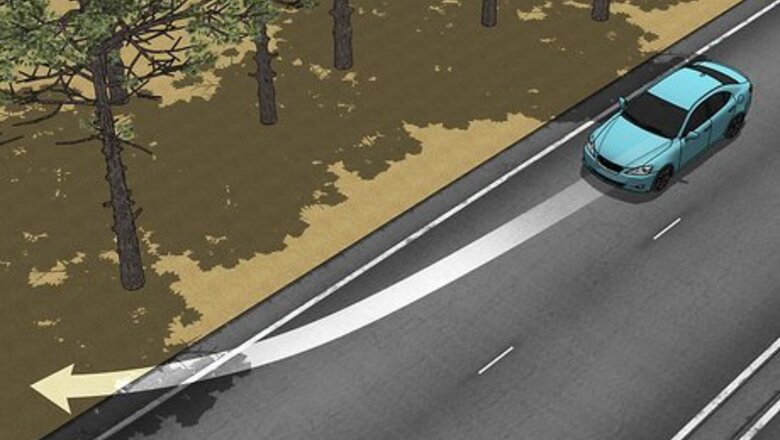
views
- Pull over to a safe location away from traffic if your tire goes flat while driving. If you find a flat while your car is parked, leave the car where it is.
- Replace the tire with a compact spare yourself, or call roadside assistance to have it done for you. If your car doesn’t have a spare, have it towed to a mechanic or tire shop.
- Avoid driving on a flat tire due to the risk of crashes and damage to the wheel or car. You can drive on a spare tire for 50 miles (70 km), and up to 50 mph (70 kph).
What to Do When You Get a Flat Tire
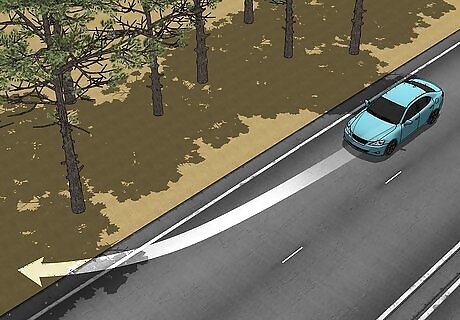
Pull over and stop in a safe location if you’re driving. Take your foot off the gas pedal to let the car slow down gradually, then turn on your hazard lights and pull off the road. If possible, stop your car in a safe, paved location away from traffic, like a parking lot or driveway. Otherwise, pull onto the shoulder of the road. Press the brake gently to bring your car to a stop, then set the parking brake. Avoid slamming on the brakes unless it’s an emergency. If you are in a safe location away from traffic, have all passengers exit the car. If not, have everyone stay in the car for their safety.
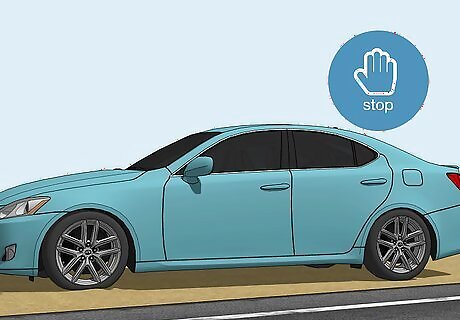
Avoid moving your car if you get a flat tire while parked. If your tire goes flat while your car is parked in your garage or driveway, leave it where it is. If it’s a public parking lot or street, avoid moving it unless you absolutely have to—otherwise, you might destroy the tire or damage your car. If you cannot leave it parked where it is, contact a towing company or roadside assistance. Have them tow the car to your home or another location where you can park your car safely.
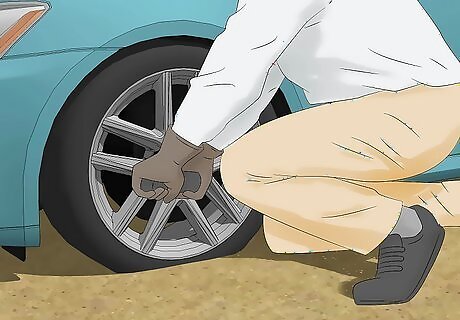
Replace the flat tire yourself if you’re comfortable doing so. The easiest fix in this situation is to replace the flat with a spare, if you have one. We'll walk you through the process in detail in the next section.
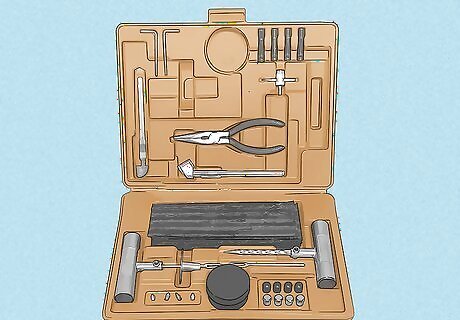
Fix your flat using a tire repair kit, if you have one. Re-inflate the flat tire with a portable air pump, then jack up the car and remove the tire. Rub soapy water across the tire’s surface and note any spots where bubbles appear. The bubbles indicate the location of the leak. Use pliers to extract nails or other sharp objects that punctured the tire, then use the tools in your repair kit to plug the hole: Locate the plug pusher, reamer, and tube-shaped rubber plugs in your kit. The plug pusher is T-shaped, with a plastic handle and a small metal rod with a slit on the end. The reamer is similarly shaped, but its rod does not have a slit. Squeeze one of the tube-shaped plugs through the slit on the tip of the plug pusher. Pull the plug halfway through the slit. Insert the T-shaped reamer into the hole. Twist the reamer and move it up and down several times to loosen the hole. If your kit includes rubber cement glue, apply the glue to the hole around the reamer, then move the reamer up and down again to force the glue into the hole. Remove the reamer and quickly insert the plug pusher into the hole. Force the plug ¾ of the way into the hole, then firmly yank out the plug pusher to cut the plug and leave it in the hole. Let the plug sit for 30 minutes, then trim any excess plug material sticking out the tire. Use your air pump to fill the tire to its correct air pressure, then put the tire back on your car.
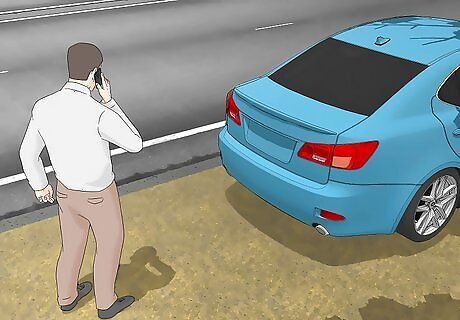
Call roadside assistance to have an expert replace the tire if needed. Use this option If your car comes with a spare tire, but you don’t feel comfortable replacing the tire yourself. Contact AAA if you have a membership, or call your vehicle manufacturer’s roadside assistance hotline to have a technician sent to your location. If your car does not come with a spare tire, the technician will have the car towed to a mechanic or tire shop to have the tire fixed or replaced. If you don’t have a AAA membership or roadside assistance available from your car’s manufacturer, have your car towed to a mechanic or tire shop. You may have to pay for repairs and towing fees, depending on your particular roadside assistance program. You may also have to purchase a new tire if your flat tire cannot be fixed.
Replacing a Flat Tire with a Spare
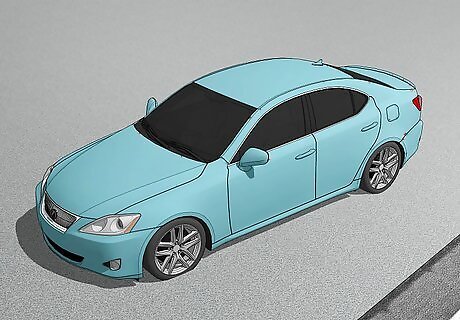
Park on a flat, paved surface away from traffic. Choose a parking lot, driveway, or wide road shoulder. Turn on your hazard lights to help other drivers see you and avoid accidents. Apply the parking brake to prevent your car from rolling unexpectedly. If your flat tire has a hubcap cover, remove it by pulling on it from one edge, like peeling the lid from a can. If you have wheel wedges, apply them on the end of the car opposite from the flat tire. For example, if you’re changing a rear tire, place the wedges in front of the front tires. If you’re changing a front tire, place them behind the rear tires. Avoid replacing a flat tire on dirt or gravel roads, uneven surfaces like hills, in rain or poor weather, or in any location near oncoming traffic.
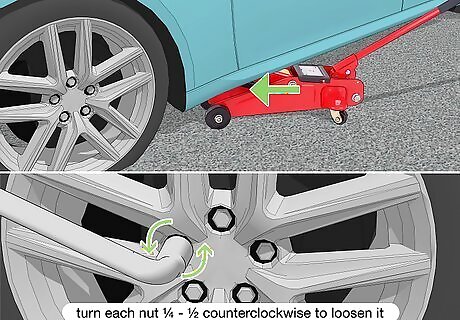
Place the jack under your and loosen the lug nuts on the flat tire. Check your car’s manual to find the exact point where the jack should be placed. Place your jack in the correct spot to prevent it from damaging your car. Use a lug wrench to loosen the lug nuts. Turn each nut ¼ - ½ counterclockwise to loosen it. Don’t remove the nuts completely. Most cars come with a jack, lug wrench, and other basic tools for changing a tire. The lug nuts may be hard to loosen. If you can’t get the lug wrench to turn by hand, use your foot to carefully apply your body weight to the wrench until it moves.
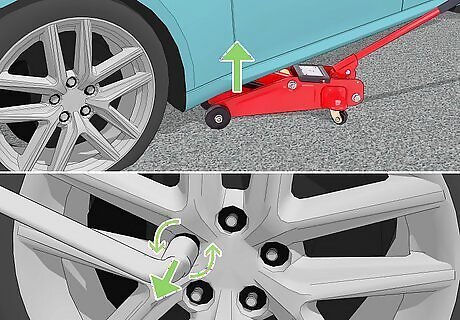
Raise your car with the jack, then unscrew and remove the lug nuts. Most cars come with compact “scissor” jacks. Turn the knob on the scissor jack clockwise to slowly raise your car until the flat tire is about 6 inches (15 cm) above the ground. Unscrew the lug nuts and remove them. Keep the lug nuts in your pocket or some other secure place to avoid losing them. For your safety, avoid putting any part of your body under the car.
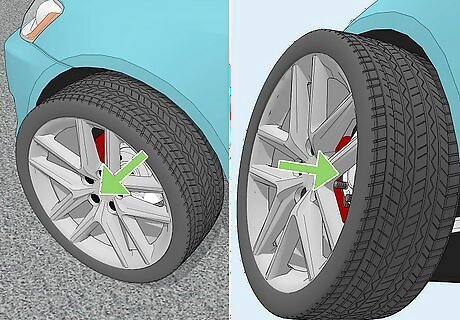
Remove the flat tire and replace it with the compact spare. Pull the tire towards you to remove it from the wheel hub, then place it on the ground to prevent it from rolling away. Place the compact spare tire on the lug bolts and slide it into place. Be careful not to accidentally hit the jack with the tire, or with your foot. This could cause the car to fall off the jack.
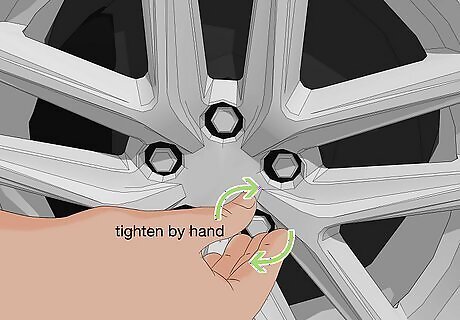
Screw on the lug nuts and tighten them by hand. Use your fingers to tighten the lug nuts as much as you can. Don’t use the wrench yet.
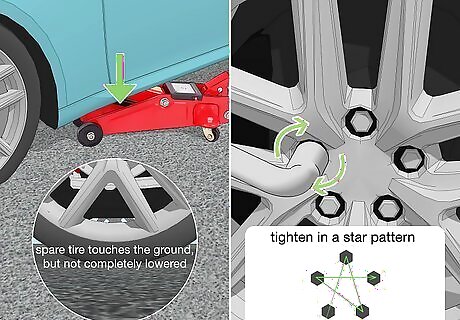
Lower the car, then use the wrench to fully tighten the lug nuts. Turn the knob on your scissor jack counterclockwise to lower the car. Lower it until the spare tire touches the ground, but don’t lower it all the way. Then use the wrench to tighten the nuts in a star pattern. This helps ensure the tire sits evenly against the wheel hub. For example, if your tire has 5 lug nuts, tighten them in a pentagram pattern—the same pattern you use to draw a 5-pointed star without picking up your pencil. If your tire only has 4 lug nuts, tighten two nuts diagonally from each other, then tighten the remaining two.
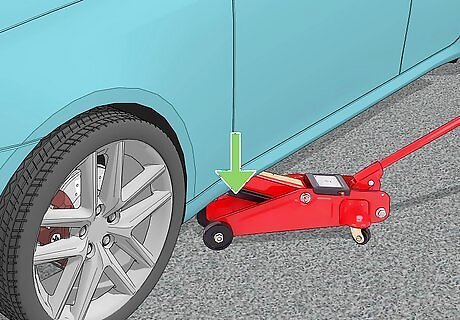
Lower the car completely, remove the jack, and replace the hubcap. Turn the knob on the jack until it comes loose and slides out easily from under the car. Then place the hubcap on the spare, if it fits. Put away your jack, wrench, wedges, and any other items you used. Keep them in your trunk or some other accessible spot in case you need to use them again. In some cases, the hubcap won’t fit on your compact spare tire. If this happens, keep the hubcap in your trunk and give it to a mechanic when you fix or replace the full-sized tire.
How to Drive Safely with a Compact Spare Tire
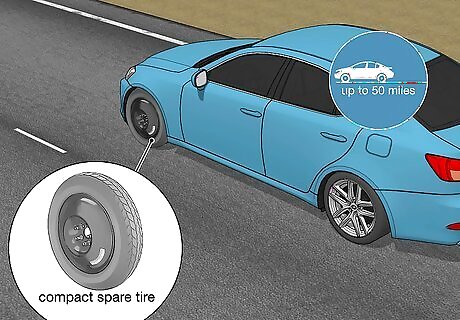
You can drive up to 50 miles on a compact spare. A compact spare tire, a.k.a. a “donut,” wears out faster and has poorer traction than a regular tire. It isn’t meant for long-term use. Use your compact spare tire to drive to a tire shop or mechanic, or to drive home in an emergency. But after 50 miles, make sure to replace it with a full-sized tire. Some spare tires allow you to drive up to 70 miles, but the exact distance depends on the tire’s manufacturer. Avoid keeping a spare tire on your car for too long, or you’ll risk blowouts or accidents due to poor traction control.
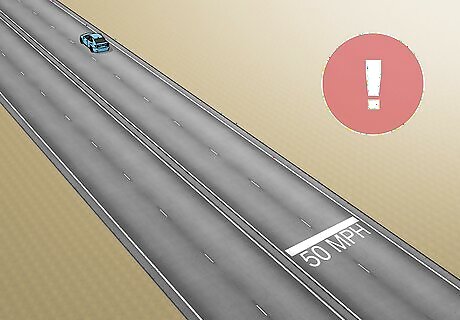
Avoid driving over 50 mph (80 kph) with a compact spare tire. Compact spare tires don’t work well at high speed. They have poorer traction, making your car harder to control. They’re also smaller and firmer than regular tires, which gives them a rougher ride and puts more strain on your car’s steering and suspension system. Keep your speed under 50 mph (80 kph) or less, even on highways. This helps prevent accidents and minimizes wear and tear on your car. Your car’s speedometer may not accurately display your driving speed when driving with a compact spare tire. Use caution and always drive at or below the speed limit when using local roads.
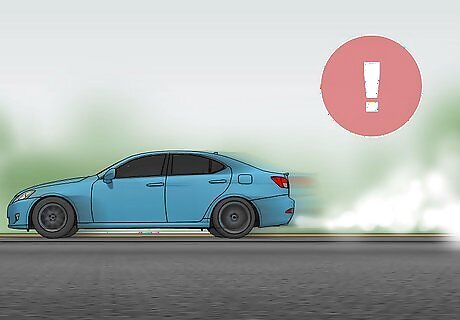
Avoid sudden acceleration, sharp turns, and sudden braking. Your compact spare tire may not have the same traction or durability as a full-sized tire. Take turns slowly, press lightly on the gas pedal to accelerate, and keep plenty of space between your car and the vehicle in front of you to avoid having to slam the brakes in an emergency. Avoid sudden shifts when using the gear selector on the car’s automatic transmission (or when shifting in a manual car). Other systems may not work correctly, including the antilock brakes, cruise control, and the vehicle stability control system.
Risks of Driving on a Flat Tire
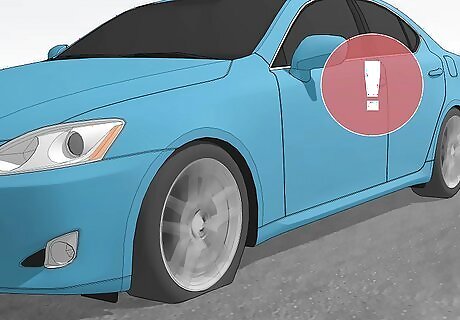
Driving with a flat tire is dangerous and not recommended. Your car will be harder to control with a flat tire, especially when driving at highway speeds, making tight turns, or hitting the brakes in an emergency. You are more likely to crash or cause someone else to have an accident. The flat tire may also get torn apart by the car’s weight, causing your car to drive on the rim. This could cause your car to suddenly veer or swerve unexpectedly.
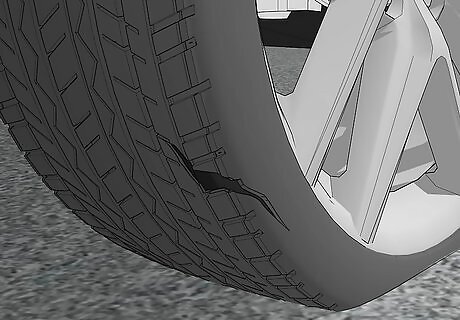
Driving on a flat tire can damage the tire beyond repair. Without air to act as a cushion, the tire’s rim (the metal wheel where the tire sits) will grind against the inside of the tire. This could ruin the tire’s inside surface and make it impossible to fix. After enough time, the friction could even shred the tire to pieces. Even driving on a flat tire for a short distance can ruin it. The car’s weight will damage the inside of the tire quickly.
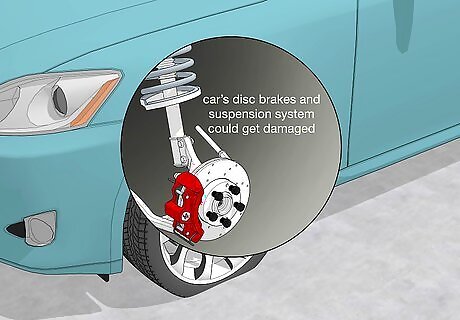
Driving with a flat tire can severely damage your car. The tire’s rim could get dented or warped by the car’s weight. Without an inflated tire to act as cushioning, the car’s disc brakes and suspension system could get damaged from bumps or potholes. The bumper might hit something since the car is lower to the ground. The brake lines could get severed or pulled loose. Even the other tires could get damaged since the flat tire may cause the car’s weight to be distributed differently.




















Comments
0 comment